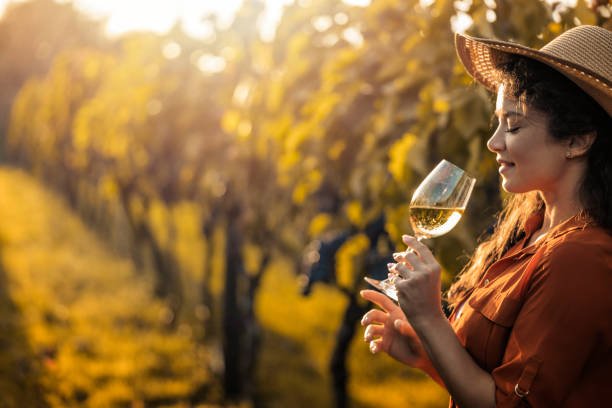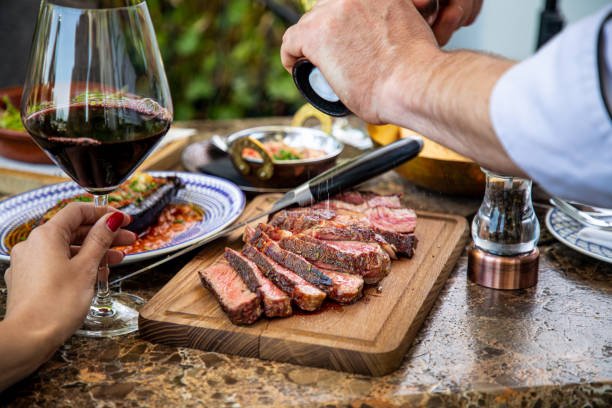
Imagine an evening.
Not in a Tuscan estate, but at a friend’s place somewhere in Serbia — Belgrade, Novi Sad. On the table: olives, sun-dried tomatoes, a slice of cured meat, a wedge of cheese — and three odd bottles. One looks cloudy, as if a little weather slipped into the glass. Another fizzes like a runaway cider. The third has a label that could be a child’s drawing of a cow.
It’s not a mistake. It’s the point.
Why people are drinking “dirty” wine
Natural wine is like vinyl. It crackles, it hisses — it’s alive. No polish, no makeup. Paris, New York, Berlin have been on it for years. Serbia also caught the signal.
First sip and you think, “Wait — is this… off?”
Second sip and you realize it has more nerve than many “correct” Chardonnays. It carries emotion the filters can’t sand down.
A small revolution (with a briny edge)
The most “modern” wine trend is really a return. Two centuries ago wine mostly made itself: grapes, wild yeast, time. No temperature rigs. No lab cultures. No additives.
Then industry arrived: stainless steel, cultured yeast, anti-oxidation. Reliable, repeatable, safe. Our parents learned to expect that.
And then a handful of stubborn winemakers went back to the basics. In Beaujolais, one of them made a cloudy, low-sulfur wine on purpose. People called it wild. Spoiled. Today we call the category natural.
Serbia, in its own key
Drive an hour or two and you’ll feel it: tiny cellars and family plots experimenting across Fruška Gora, Župa, and the Negotin area. Local grapes — Prokupac, Tamjanika, Kadarka — are getting a new voice. These aren’t museum pieces; they’re wines with a pulse, confident enough to sit next to French or Italian bottles without apology.
In cities and towns, the lists are changing. Instead of the safe “Cab/Merlot,” you’ll see pet-nat that pops like a summer party and amber wines raised in clay — sometimes Georgian-style qvevri, sometimes local takes.
What’s special about them?
- Taste: bright, layered, occasionally wild. Fruit and earth, salt and spice — not every bottle is a home run, but boredom is rare.
- Philosophy: small farms, low intervention, respect for place. There’s a human behind each label, not a committee.
- Look: labels that feel like studio posters. The bottle itself becomes a little piece of design.
Bring one to dinner and it’s not just alcohol — it’s a statement: let’s drink something honest.
Planning a sip-by-sip route

You don’t need a master plan. Drop into a natural-leaning wine bar or bottle shop (Belgrade and Novi Sad have several; you’ll also find gems in smaller towns). Ask for by-the-glass recommendations before committing to a bottle. If they ask what flavors you like, you’re in the right place.
A simple progression:
- Start with a familiar white (Sauvignon or Chardonnay made naturally).
- Try a pet-nat (light, sparkling, lively).
- Move to amber/orange (texture, tea-like grip).
- Finish with a local red (Prokupac or Kadarka) for Serbia’s signature.
Where Serbia fits on your trip
Natural wine in Serbia isn’t a trophy hunt; it’s a rhythm. You’ll see it in casual bars, neighborhood bistros, and specialist shops. Some venues focus on Serbian producers; others mix in Georgia, France, and beyond.
If you want one place to start, check out Tipsy Wine Shop in Belgrade — a hub for natural and organic bottles from Serbia and abroad.
Either way, it’s a good read on the country right now: less ceremony, more character.
The takeaway
Natural wine isn’t about perfect. It’s about present. Sometimes brilliant, sometimes messy — always alive.
So if a glass looks a little hazy, don’t panic. It might be the start of your favorite travel story.



